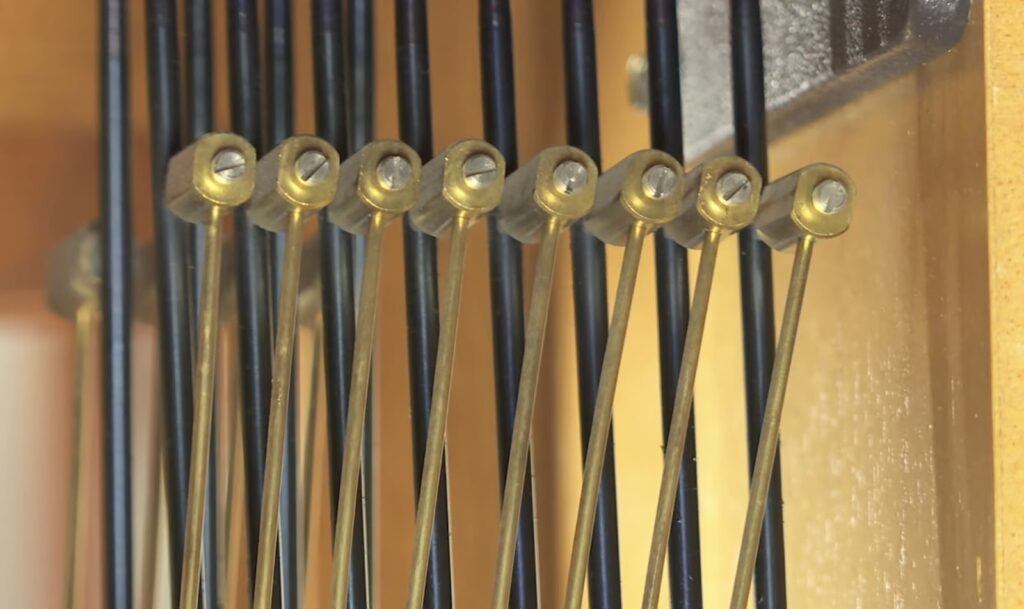Embodying the allure of bygone days, grandfather clocks are more than just timekeepers; they are pieces of art that echo the craftsmanship and dedication of their creators. Each clock, with its unique design and movement, tells a story of collaboration between movement specialists and exterior designers. The delicate dance of gears, weights, and pendulums inside these clocks showcases the genius of companies like Hermle and Kieninger. Simultaneously, the ornate wooden casings and intricate detailing mirror the artistry of brands like Howard Miller and Ridgeway.
The rhythmic ticking and the melodious chimes transport listeners back in time, conjuring images of grand halls and candlelit evenings. But as with all things, evolution is inevitable. The introduction of battery-powered grandfather clocks signifies this progression, blending age-old designs with contemporary mechanics. This fusion ensures that while the charm of the past is preserved, the efficiency and ease of the present are embraced, catering to modern sensibilities without compromising on the rich heritage of these magnificent timepieces.
Movement Varieties in Grandfather Clocks
1. Chain-Driven Movement
In the realm of grandfather clocks, those equipped with chain-driven movements utilize chains as the primary mechanism to set the weights into action. Typically, such clocks come with three distinct chains, each corresponding to a specific weight with a unique function. The rightmost weight manages the melodious chimes, the central one powers the rhythmic swing of the pendulum, and the leftmost weight oversees the hourly chime.
Every week, a ritual unfolds: the weights, nearing the bottom, must be hoisted back to the top, ensuring the clock’s rhythmic heartbeat continues. Lifting the weight-end of the chain while pulling its other end downwards accomplishes this. Manufacturers advise the use of cotton gloves or a gentle cloth during this process to prevent the chains from tarnishing.
These chain-driven movements, while smaller and often found in economically priced clocks, do come with their own limitations. Typically, the clock cases housing these mechanisms are compact, making them suitable for smaller spaces. However, they tend to have a shorter lifespan, though replacements are relatively affordable.
2. Cable-Driven Movement
Clocks powered by cable-driven movements feature weights suspended by cables, enabling the return of the clock’s weights to their zenith. Mirroring their chain-driven counterparts, these clocks also possess three weights, each with a designated role. By week’s end, as the weights approach their lowest point, they must be cranked back to the top. This winding process involves a key or crank, which when inserted into the dial, hoists the weights back.
The cable-driven clocks present several advantages. The brass components remain untouched, preserving their shine. Additionally, these clocks boast a prolonged lifespan and produce clearer chime sounds. Due to the larger movement mechanism, they often come in grander cases, paving the way for intricate designs. Unsurprisingly, their increased cost reflects these superior attributes.
3. Quartz (Battery-Operated) Movement
In today’s fast-paced world, the introduction of quartz and battery-operated grandfather clocks marks a significant step towards convenience and modernity. These innovations have seamlessly merged the old-world charm of grandfather clocks with the technological advancements of our age. The brilliance of quartz crystals, with their innate ability to regulate time with impeccable accuracy, has revolutionized the very essence of timekeeping. This is especially evident when we consider that these clocks deviate minimally over prolonged periods.
Moreover, the shift towards battery-operated mechanisms reflects our society’s inclination towards simplicity and functionality. Gone are the days when meticulous weekly or daily winding rituals were the norm. Instead, the contemporary user seeks reliability, efficiency, and a hassle-free experience. The longevity of the batteries, often surpassing a year, further reduces the need for frequent interventions.
Interestingly, while the mechanics have evolved, the aesthetic appeal and grandeur of grandfather clocks remain undiminished. These modern iterations, with their advanced quartz technology, continue to be revered household items, symbolizing a beautiful amalgamation of heritage and innovation. As they chime each hour, they don’t just mark the passage of time but also celebrate the progress of clock-making through the ages.
In Conclusion: The Timeless Evolution of Grandfather Clocks
Grandfather clocks, with their regal stature and melodic chimes, have not only stood the test of time but have also evolved through centuries. From the intricate chain-driven movements, which evoke a sense of nostalgia, to the majestic cable-driven clocks, each type narrates a story of craftsmanship and technological advancement. The modern quartz-driven clocks, on the other hand, encapsulate the blend of tradition and innovation, offering precision with minimal maintenance.
It’s noteworthy how these clocks, despite their underlying differences in mechanisms, still command admiration and respect. Whether one cherishes the weekly ritual of winding or prefers the efficiency of battery-operated clocks, the essence remains unchanged – a celebration of time and the art of timekeeping.
As we stand at the crossroads of tradition and modernity, grandfather clocks serve as a gentle reminder of our journey through time. They represent our past, mark our present, and will undoubtedly grace our future. These timeless pieces, with their intricate designs and precise mechanics, are more than just instruments of timekeeping. They are, in every sense, a blend of art, science, and history, echoing tales of yesteryears while ticking steadily into tomorrow.
